Table of content
Chinese broccoli, known as gai lan or kai lan, is a leafy green vegetable widely used in Asian cuisine. Its crisp stems and slightly bitter leaves make it a favorite in stir-fries, soups, and salads. One of the most common preparation methods for this vegetable is blanching—a cooking technique that involves briefly boiling the vegetable in salted water and then plunging it into ice water to halt the cooking process. Blanching not only softens the vegetable’s fibrous texture but also enhances its vibrant green color and preserves its nutritional value. However, achieving the perfect tenderness requires precision, as overcooking can lead to mushiness, while undercooking may leave the stems too crunchy. The question then arises: How long should you blanch Chinese broccoli to ensure it is cooked to perfection?
This article delves into the science and practicality of blanching Chinese broccoli, exploring the factors that influence cooking time, step-by-step techniques, and tips to avoid common pitfalls. Whether you are a home cook aiming to elevate your weeknight dinners or a culinary enthusiast experimenting with Asian flavors, understanding the nuances of blanching will empower you to prepare this vegetable with confidence.
The Basics of Blanching
Blanching is a two-step process: boiling and shocking. The first step involves immersing the vegetable in rapidly boiling water, which denatures enzymes that cause color fading and nutrient loss. The second step, shocking, involves transferring the blanched vegetable into a bowl of ice water. This sudden drop in temperature halts the cooking process, preserving the vegetable’s texture, color, and crispness.
For Chinese broccoli, blanching serves multiple purposes. It softens the thick stems, which take longer to cook than the delicate leaves, ensuring even doneness. It also mellows the vegetable’s natural bitterness, making it more palatable. Additionally, blanching can be a preliminary step before stir-frying, as it reduces cooking time and prevents the vegetable from becoming soggy in the wok.
Factors Affecting Blanching Time
The ideal blanching time for Chinese broccoli varies depending on several factors:
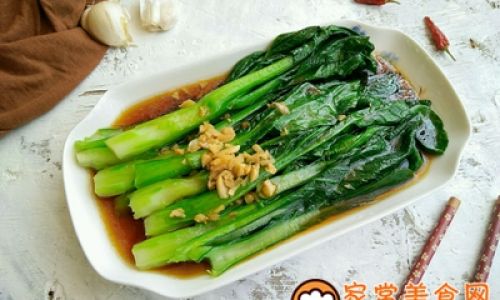
-
Size and Thickness of the Stems:
Thicker stems require longer blanching times to soften adequately. If the stems are particularly robust, you may need to increase the cooking time by 30 seconds to 1 minute. Conversely, thinner, younger stalks will cook faster. -
Water Temperature and Quantity:
Using a large pot of water ensures that the temperature remains stable when the vegetable is added. If the water is not boiling vigorously, the blanching time will increase. A general rule is to use at least 4 quarts (3.8 liters) of water per pound (450 grams) of vegetables. -
Desired Texture:
Some prefer their Chinese broccoli with a slight crunch, while others enjoy a softer texture. Adjust the blanching time accordingly—shorter for crisp-tender, longer for softer results. -
Altitude:
At higher altitudes, water boils at lower temperatures, which can affect cooking times. If you live above 3,000 feet (914 meters), you may need to extend the blanching time by 1–2 minutes. -
Freshness of the Vegetable:
Fresher Chinese broccoli cooks faster than older, slightly wilted produce. Always choose vibrant, firm stalks with crisp leaves for optimal results.
Step-by-Step Guide to Blanching Chinese Broccoli
Preparation
- Trim the Ends: Use a sharp knife to trim about ½ inch (1.3 cm) from the base of each stalk. Remove any tough or discolored parts.
- Separate Stems and Leaves (Optional): If the stems are exceptionally thick, you can separate them from the leaves and blanch them separately. Add the stems to the boiling water first, then the leaves 30 seconds later.
- Prepare the Ice Bath: Fill a large bowl with ice cubes and cold water. Set it aside near the stove.
Boiling the Water
- Fill a large pot with water, leaving enough room to prevent overflow when the vegetables are added.
- Add 1–2 tablespoons of salt per quart (liter) of water. Salt enhances the vegetable’s flavor and helps maintain its green color.
- Bring the water to a rolling boil over high heat.
Blanching the Chinese Broccoli
- Gently lower the trimmed Chinese broccoli into the boiling water. Use tongs or a slotted spoon to submerge it fully.
- Cooking Time:
- For crisp-tender texture: Blanch for 1.5–2 minutes.
- For softer texture: Blanch for 2.5–3 minutes.
- Stir occasionally to ensure even cooking.
Shocking in Ice Water
- As soon as the blanching time is up, transfer the vegetable to the ice bath using tongs or a slotted spoon.
- Allow it to cool for 2–3 minutes, or until completely chilled. This step is crucial to halt the cooking process and preserve the vibrant green color.
Draining and Drying
- Remove the Chinese broccoli from the ice bath and pat it dry with a clean kitchen towel or paper towels. Excess moisture can dilute sauces or make the vegetable soggy in stir-fries.
Common Mistakes to Avoid
-
Overcrowding the Pot:
Adding too much Chinese broccoli at once lowers the water temperature, resulting in uneven cooking. Blanch in small batches if necessary.
-
Skipping the Ice Bath:
Without shocking, the vegetable will continue to cook from residual heat, leading to overcooked, mushy results. -
Underseasoning the Water:
Salt is not just for flavor—it also strengthens the vegetable’s cell walls, helping it retain its structure and color. -
Overcooking:
Chinese broccoli cooks quickly. Err on the side of undercooking, as you can always blanch it for an additional 30 seconds if needed. -
Using Dull Knives:
Blunt knives can bruise the stems, leading to uneven cooking and a less appealing texture.
Serving Suggestions and Recipe Ideas
Blanched Chinese broccoli is incredibly versatile. Here are some ways to enjoy it:
-
Stir-Fried with Garlic and Oyster Sauce:
After blanching, stir-fry the vegetable in a hot wok with minced garlic, oyster sauce, and a splash of sesame oil. Serve with steamed rice.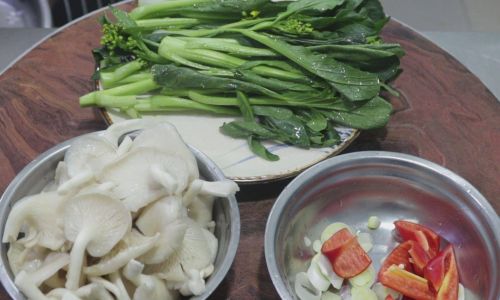
-
Cold Salad with Sesame Dressing:
Toss blanched Chinese broccoli with a dressing made from toasted sesame oil, rice vinegar, soy sauce, and honey. Garnish with toasted sesame seeds. -
Soup Garnish:
Add blanched Chinese broccoli to miso soup or hot-and-sour soup for a vibrant, crunchy contrast. -
Grilled or Charred:
After blanching, pat the vegetable dry and grill it over high heat until lightly charred. Drizzle with chili oil and serve with lemon wedges. -
Simple Side Dish:
Drizzle blanched Chinese broccoli with olive oil, sprinkle with flaky sea salt, and squeeze fresh lemon juice over the top.
Nutritional Benefits of Chinese Broccoli
Chinese broccoli is a nutritional powerhouse, rich in vitamins A, C, and K, as well as folate, calcium, and iron. It also contains antioxidants like sulforaphane, which has been linked to anti-inflammatory and cancer-preventive properties. Blanching helps retain more nutrients compared to prolonged boiling or frying, making it a healthy cooking method.
Adjusting Blanching Time for Different Recipes
The blanching time may vary slightly depending on how you plan to use the Chinese broccoli:
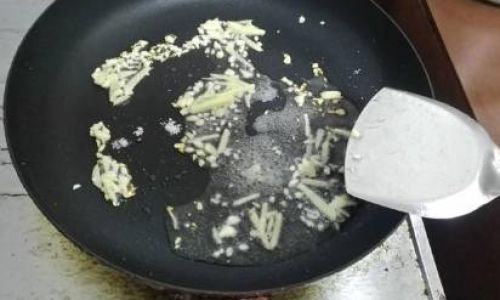
- For Stir-Fries: Blanch for 1.5–2 minutes to retain some crispness, as it will cook further in the wok.
- For Salads: Blanch for 2–2.5 minutes to soften slightly while maintaining a pleasant texture.
- For Purees or Soups: Blanch for 3 minutes until very tender, then blend or mash as desired.
Troubleshooting Guide
-
My Chinese Broccoli Turned Gray:
This happens when the vegetable is overcooked or the water is not sufficiently salted. Ensure the water is boiling vigorously and add enough salt. -
The Stems Are Still Tough:
Next time, separate the stems from the leaves and blanch them for an additional 30 seconds. -
The Leaves Are Wilted:
Avoid overcrowding the pot, and shock the vegetable immediately after blanching to preserve its structure.
Frequently Asked Questions
Q: Can I blanch Chinese broccoli in advance?
A: Yes! Blanch it up to 24 hours ahead, store it in an airtight container in the refrigerator, and reheat it briefly in boiling water or a hot pan before serving.
Q: What if I don’t have an ice bath?
A: Rinse the vegetable under cold running water until cooled, then pat it dry. However, an ice bath yields the best results for color and texture retention.
Q: Can I reuse the blanching water?
A: It’s not recommended, as the water becomes cloudy with starch and impurities. Discard it after each use.

Q: How do I know when it’s done?
A: Pierce a stem with a fork—it should offer slight resistance for crisp-tender or glide through easily for softer results. The leaves should wilt but retain their bright green hue.
Conclusion
Blanching Chinese broccoli is a simple yet precise technique that transforms this robust vegetable into a culinary delight. By mastering the balance of time and temperature, you can achieve the perfect texture—whether you prefer a crisp bite or a tender finish. Remember to adjust your blanching time based on the vegetable’s size, your desired texture, and the recipe’s requirements. With practice, you’ll learn to recognize the subtle cues that indicate doneness, from the vibrant green hue to the fork-tender stems.
Next time you’re preparing a stir-fry, salad, or side dish, take a moment to appreciate the art of blanching. It’s a small step that elevates Chinese broccoli from ordinary to extraordinary, turning a humble vegetable into a star ingredient. So boil that water, set your timer, and embark on a journey to blanching perfection—your taste buds will thank you.
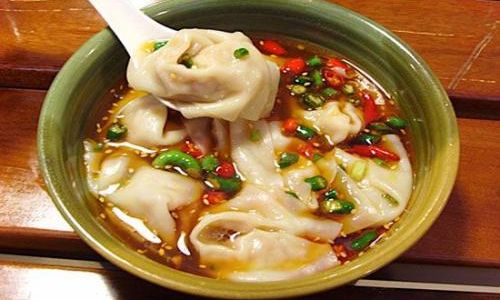
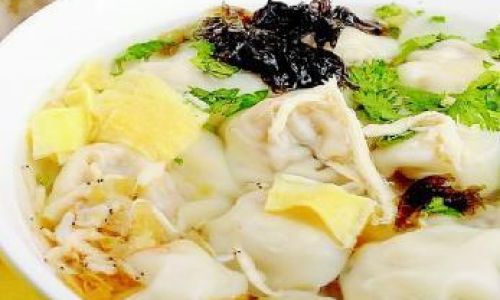



0 comments